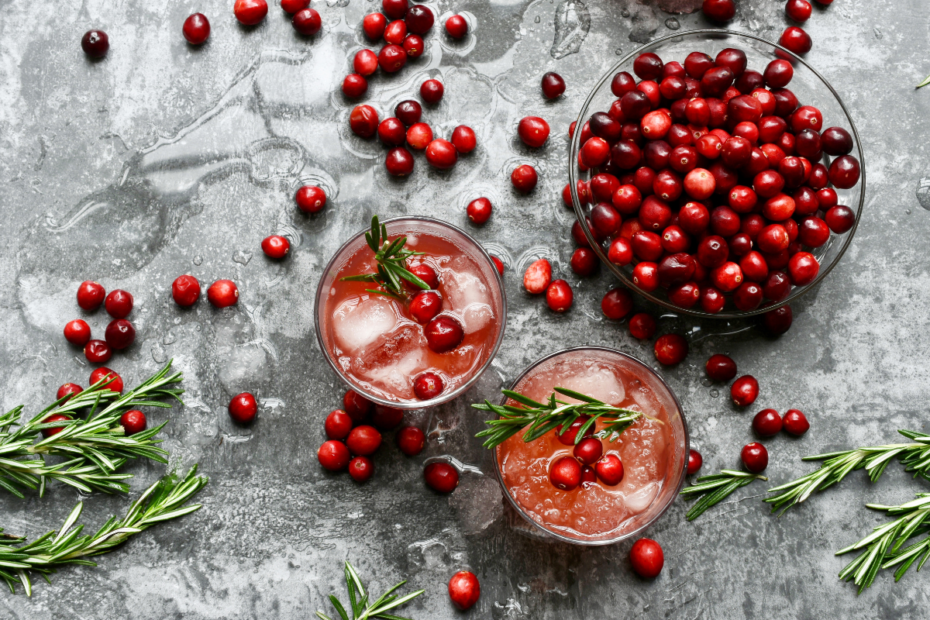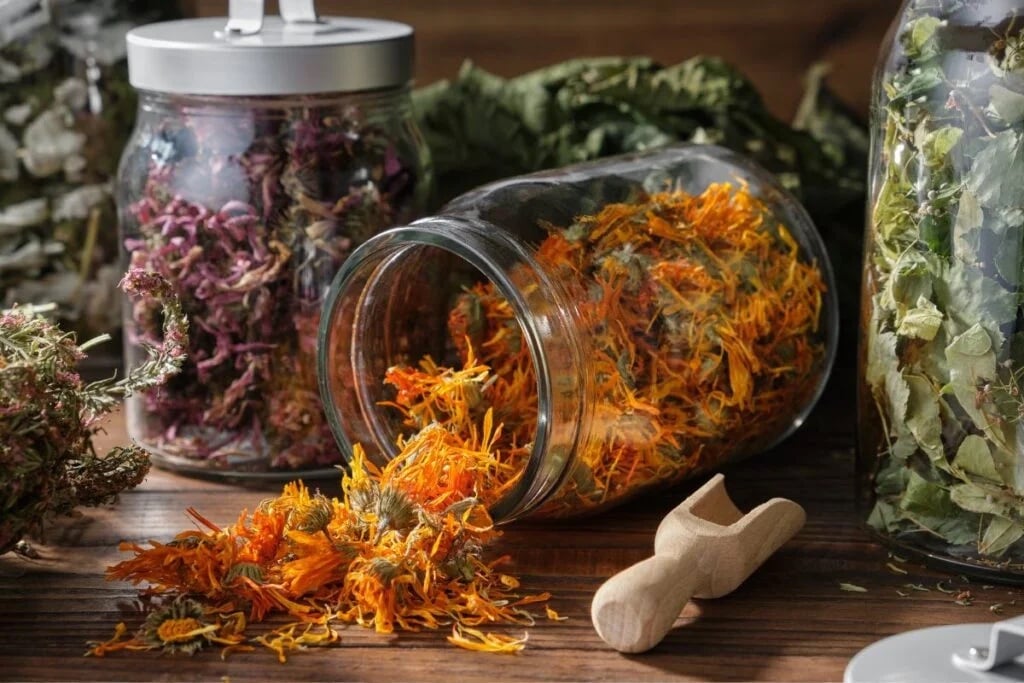Cranberry tea is a favorite in the cold season because of its accumulated health benefactors: fructose, pectins, glucose, proteins, organic acids, vitamins, mineral salts, and more. The berries have been known and used since ancient times. The ancestors also admitted cranberry tea benefits.
Learn More About the Cranberries
Cranberries (Oxycoccus palustris) are perennial, evergreen semi-shrubs that grow up to 5–10 cm tall and produce prostrate, rooted shoots up to 40–100 cm long in many places. The leaves are thick, short-petioled, 6–12 mm long, and have downcurved margins. The upper half of the leaves is dark green, and the lower half is bluish-green. The flowers are clustered in the axils of the upper part of the leaves of 1–4 mature shoots. The pink florets are 2–5 cm long and glabrous, and the corolla is 6-7 mm in diameter.
Cranberries bloom from May to June, but sometimes single flowers open in July. The fruit is a dark red or red with a bluish tinge in the shape of an egg, sphere, or pear, 12–18 mm in diameter, with several tiny seeds. Cranberries ripen in September. The cranberries hide from birds amongst the peat moss and remain intact, unpicked, and unharvested until late spring or early summer of the following year.
Cranberries grow in bogs, moorlands, intermediate marshes, lake lochs, and swamp pine forests. You can often fain them on heathland and acidic peat. Cranberries are widespread throughout northern Asia, Europe, and North America. However, their resources are relatively low, as much of the suitable habitat has been deforested and peat excavated, and people have started to grow them.
As cranberries contain the preservative benzoic acid, you can store the picked berries for a long time without processing. Keep cranberries in a cool place throughout the winter, covered with boiling water to prevent rotting. Once picked and cleaned, cranberries can be frozen.
People love to eat raw berries and use them to make jams, compotes, vinegar, squeezed juices, soft drinks, candies, and intoxicating beverages.
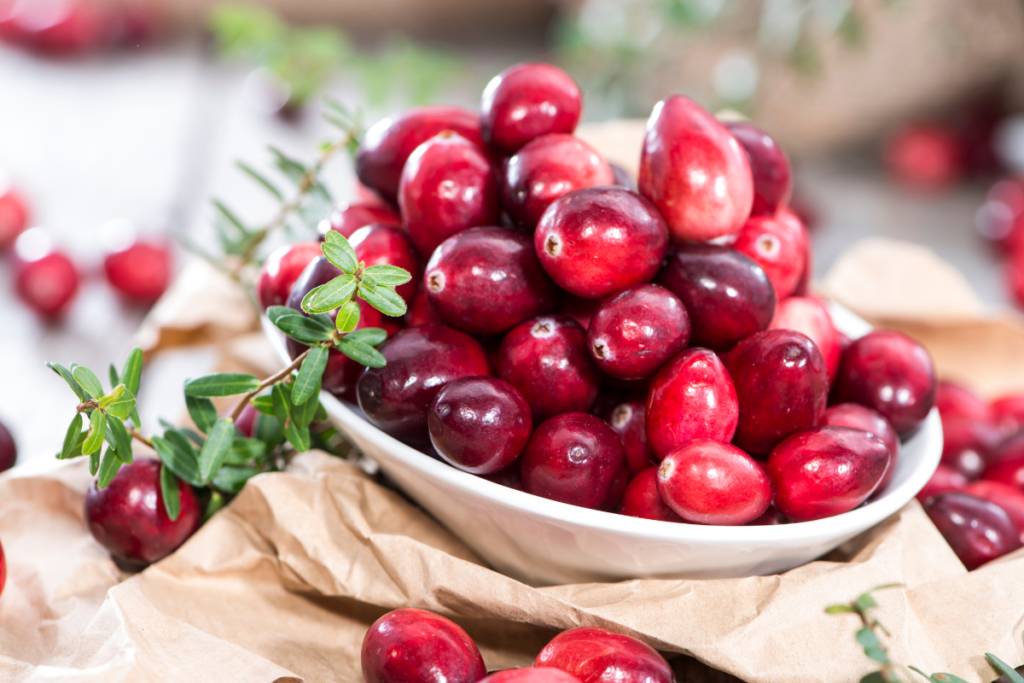
Benefits of Cranberries
Many people classify cranberries as a superfood because of their high nutrient and antioxidant content. Cranberries contain up to 5% sugars, mainly monosaccharides, up to 3.6 % organic acids (citric, benzoic, ursolic, malic, etc.), and about 1% pectin, vitamins, flavonoids, and minerals.
Cranberries are a nutritious plant with a long tradition of use in folk medicine and are very suitable for strengthening the body.
Cranberry Tea Benefits
- You can make cranberry tea and drink it in small clusters when you have a fever.
- It is suitable for the treatment and prevention of urinary tract infections. The high levels of antioxidant proanthocyanidins in cranberries can help prevent certain bacteria from adhering to the walls of the urinary tract. In this way, cranberries help fight infections. Cranberry supplements or freshly squeezed cranberry juice (commercially available juice does not have this effect) effectively treat urinary tract infections.
- Including cranberries in the daily diet can reduce the risk of cardiovascular disease and increase ‘good’ cholesterol levels.
- Cranberry tea can help to decelerate cancer progression by inhibiting the growth of cancer cells, causing them to die, and reducing inflammation in the body.
- Thanks to their proanthocyanidins, these berries can help protect the teeth from decay-causing bacteria and act as a preventive measure against gum diseases.
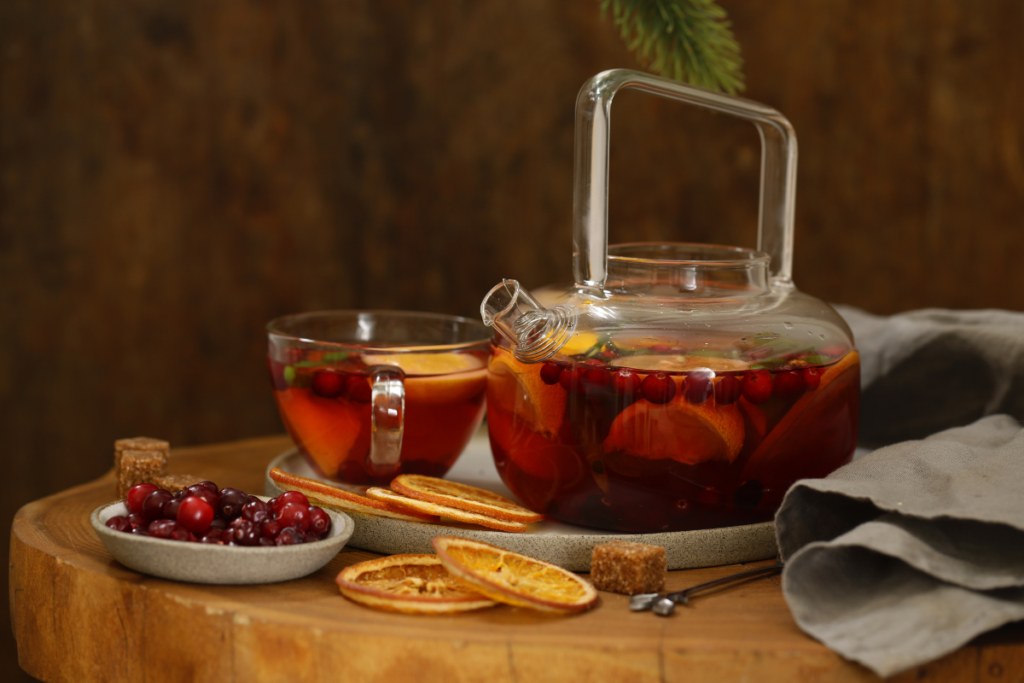
How to Prepare Cranberry Tea
You will need:
- 1 liter of water,
- 200 g of cranberries,
- 1 cinnamon stick.
Preparation:
- Pour the water into a saucepan, add the cinnamon stick, and boil.
- Crush half of the cranberries (100 g) with a food processor. You can strain the cranberries.
- Add 100 g of cranberries to the boiling water and the puree of 100 crushed cranberries.
- Remove the pot from the heat and leave it to stand, covered, for at least 10 minutes.
- You can pour it into cups, flavor it with honey or your favorite sweetener, and enjoy.
You can add various spices to this recipe, such as cloves, star anise, cardamom, etc., together with the cinnamon stick. If you want to flavor it with lemon, orange, or grapefruit, add the slices to the tea after it has cooled in the poured cups.
Linden, Thyme, and Cranberry Tea from Leaves
Not only cranberries are suitable for teas, but also the leaves. You can mix them with linden blossom and thyme; this tea will give you the beneficial properties of three herbs. The lime will soothe, the thyme will inspire, and the cranberry leaves will fight inflammation and boost immunity.
You will need:
- 1 teaspoon of linden leaves,
- one teaspoon of thyme,
- 1 teaspoon cranberry leaves,
- 1 liter of water,
- Sweetener (honey, sugar, or your favorite sweetener).
Put the herbs in a saucepan or teapot and cover with boiling water. Leave steep for about 5–10 minutes, then strain into cups. Sweeten with honey or your favorite sweetener, then enjoy.
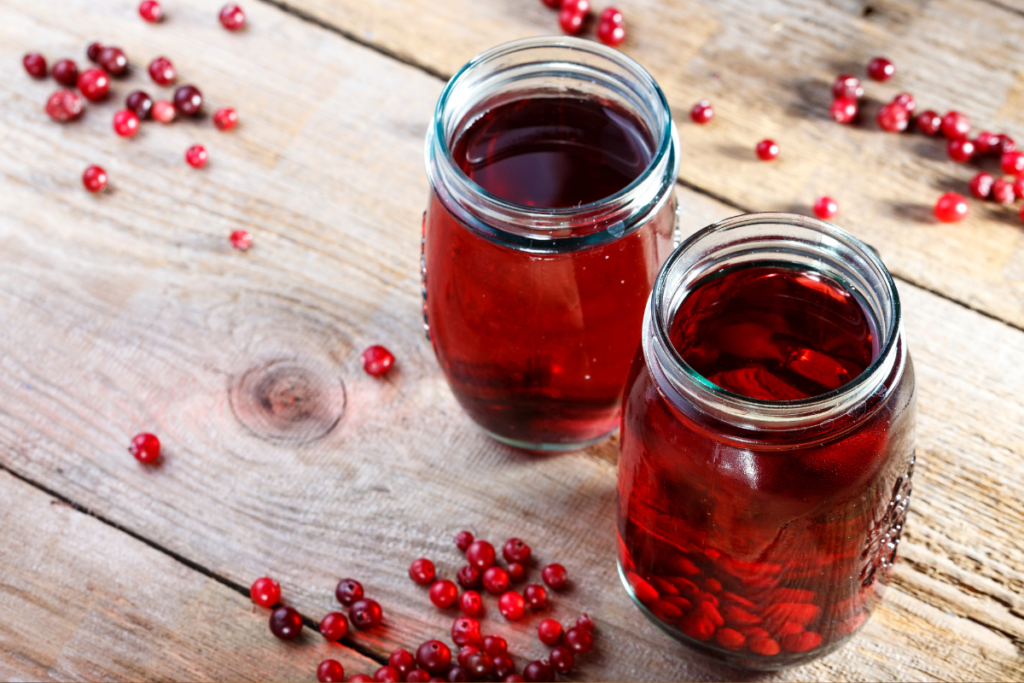
Cranberry Kvass
You will need:
- 1.5 kg of cranberries,
- 800 g of sugar,
- 40 g yeast,
- 10 l of water.
Preparation process:
- Rinse the cranberries with boiling water, put them in a saucepan, and cook for 10 minutes.
- Strain the berries and mash them.
- Rinse several times with the resulting decoction and strain again.
- Add the sugar to the cranberry decoction.
- When the decoction has cooled, add the yeast mashed with the sugar.
- When the liquor has set, pour it into bottles, cork them, and store them in a cold room.
- The spirit will be ready to drink after 2–3 days.
Cranberries for Your Beauty
Cranberries have anti-inflammatory and antiviral properties and contain natural acids, making them ideal for treating acne, blemishes, fine scars, and clogged pores. Squeeze a little cranberry juice from the cranberries to moisten a cotton bud or tampon. Apply it to the skin and leave it to dry. (Store-bought cranberry juice will not have the same potent properties as freshly squeezed juice.)
To remove skin pigmentation, mix some freshly squeezed cranberry juice with a few grams of flour, apply it to the skin as a mask, and massage for 10–15 minutes. Then wash it off.
Cranberries are also rich in antioxidants, so they fight free radicals and give your skin a youthful glow and elasticity. Mix freshly squeezed cranberry juice with natural yogurt and massage it onto your face for 5 minutes. Then rinse off with cool water.
Freshly squeezed cranberry juice with orange juice will be a vitamin C bomb and stimulate collagen production. Collagen helps to transport oxygen and nutrients to the skin, giving it elasticity and firmness. Leave this mask on your face for 10 minutes, then rinse with cool water.
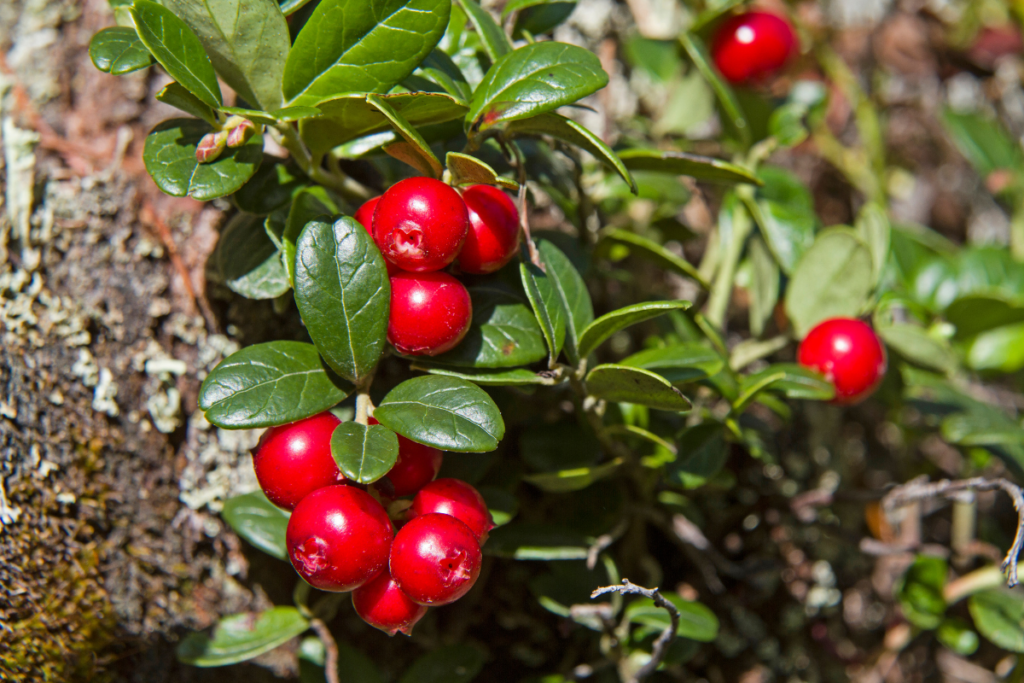
Side Effects of Cranberries
Cranberries are a natural food with health benefits. But it doesn’t mean that they are suitable for everyone. It is essential to know that cranberries and their juices and teas should be avoided if:
- Your stomach’s acidity is high.
- You are taking blood thinners. Taking cranberries may increase the effects of blood thinners.
- You are susceptible to calcium oxalate-type stones; cranberry products can promote the formation of kidney stones.
- You are pregnant or breastfeeding. It is not well known whether cranberries adversely affect pregnancy or a breastfeeding baby.
If cranberries are used for therapeutic purposes rather than preventive use, for example, urinary tract infections, it is best to consult your doctor before taking them.
Associative photos © Canva.
